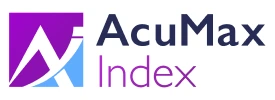We’re still in the middle of The Great Resignation and it has been a tough run for employers trying to decrease attrition while dealing with a myriad of other obstacles. Many companies are trying to figure out what they can do to help keep their top performers.
Multiple factors can improve retention, including employees feeling valued, being highly aligned with the position, feeling like they belong and have good relationships with their teammates, supporting the company’s purpose and seeing the potential to grow. Let’s examine the final factor in more detail, as companies need to be looking at what they can do to improve the opportunities that these top performers have to grow with their organization.
One of the biggest first steps that you can take is to prioritize promoting from within. It is incredibly demoralizing to employees to continue to see leadership roles get filled from the outside instead of seeing themselves or their peers advance in their careers. Establish a company wide policy that prioritizes internal candidates wherever possible and posts positions internally before opening them up to outside applicants.
Help your employees see their own personal potential to grow and stay motivated to perform by ensuring that there is a clear internal career pathway set up, communicate what that pathway is and help them know how to navigate it.
Moving from role to role should not have to involve big jumps. See what you can do to create smaller steps on the career pathway, you can do this by looking for opportunities to create new roles in between existing roles. For example, if your company only has a promotional path of analyst, to manager and then director you might be creating a situation where your employees will get easily frustrated on their journey and where it is difficult to get the skills and differentiation needed to progress. You could take that same promotional path and create additional roles for a junior analyst, senior analyst, supervisor or senior manager.
Once you have a strong internal promotional path developed, make it clear what is needed to advance along the pathway from role to role. Outline the key differentiators between the roles including the necessary or desired skills, subject matter expertise and years of experience. By being very transparent about what it takes to progress you will motivate your employees while letting them know the decision factors that go into promotions.
Keep Top Talent By Creating Internal Promotion Pathways





